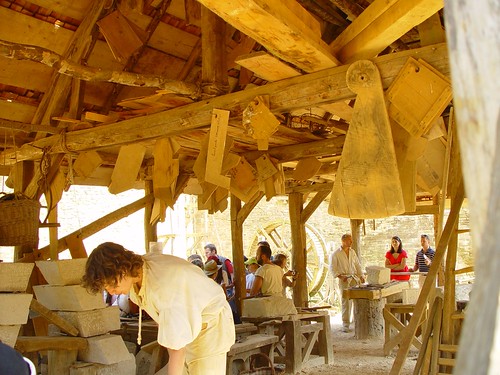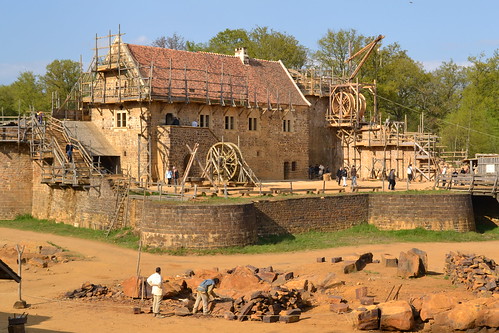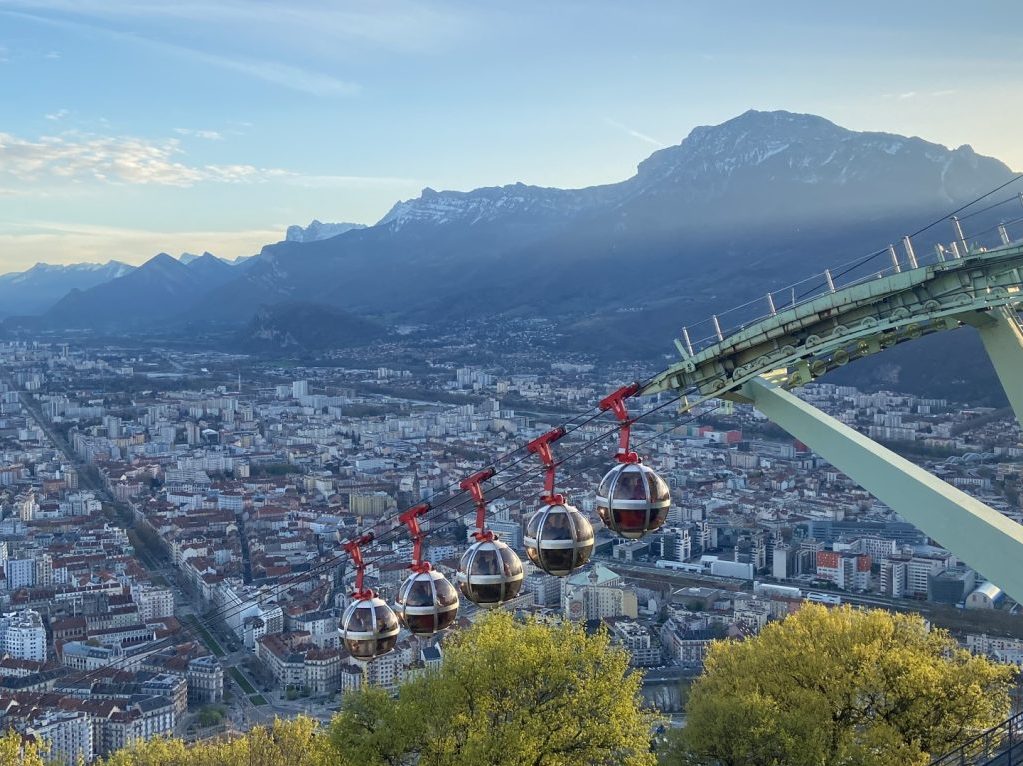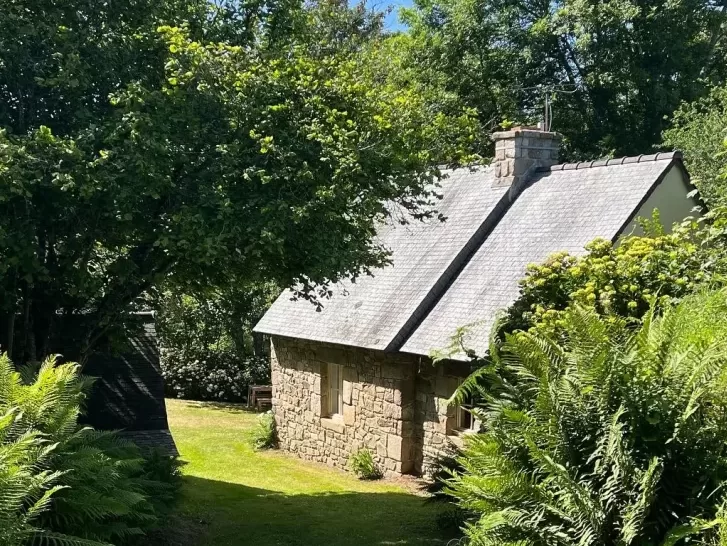Guédelon castle
In the heart of the forest of Puisaye in Yonne, Burgundy, a team of fifty people are building a castle using the very same techniques, tools and materials used in the Middle Ages. The site was chosen because of an abundance of construction materials: an abandoned stone quarry in a large forest, close to a pond.
Guédelon castle was designed according to the architectural model developed during the 12th and 13th centuries by Philip II of France. When completed in the 2020s, it should be an authentic recreation of a 13th century medieval castle.
Guédelon castle exemplifies experimental archaeology, a hands-on approach of testing methods to rediscover forgotten techniques. It enables academics to experiment and learn the old skills, rather than relying on theories and models. Sarah Preston is to tell us a bit more about the project.
Sarah, for our readers who are not familiar with the Guédelon project, can you briefly describe:
What is it?
At Guédelon, we are building a 13th-century style castle using the materials, tools and building techniques used in that period.
Where is it?
Deep in secluded woodland, in an abandoned quarry, Guédelon is situated in the départment of Yonne, in the north-west of Burgundy, between the villages of Saint-Saveur-en-Puisaye and Saint-Amand-en-Puisaye. We are 2 hours from Paris.
How can people get there?
Guédelon is in the départment of Yonne in Burgundy,on the D955 road between the towns of Saint-Sauveur-en-Puisaye andSaint-Amand-en-Puisaye.
By Road:
40 minutes from Auxerre via the D965
2 hours from Paris, via A6, onto A77 (exit junction 21)
1 hour 40 minutes from Orléans via N60
1 hour from Nevers, exit A77 junction 22
2 hours from Dijon, exit A6 junction 21
GPS co-ordinates:
3°09’17” EAST
47°34’53” NORTH
By Rail:
– Cosne sur Loire station
(Paris – Nevers line) 26km from Guédelon.
– Migennes station
(Paris – Dijon line) 46km from Guédelon.
Please note there are no connecting services to Guédelon from these stations.
By Air:
– Paris – Orly airport
Its size (both the site and the eventual buildings)?
The construction site is set in 9 hectares of oak woodland. The castle courtyard itself is roughly 50m X 50m. The great tower will be 28.5m-high at the end of the project.
Who is involved (including the number of people, their nationalities and their expertise)?
Today, Guédelon employs some 50 people, of whom 35 work on the building site itself. Some were already qualified, but others have acquired their skills on site.
Most of the workers are French; however we currently have British, Dutch, German, Italian and New Zealander members of staff.
Each year, around 600 people choose to play an active role in the venture. For a period of several days, they step into the shoes of a medieval builder. These individuals may be highly skilled stonemasons or enthusiasts with no practical construction experience, but who want to play an active role in the construction process and be part of history in the making!
We have an ever-growing scientific committee, made up of some of France’s leading historians and archaeologists. Their involvement is of mutual benefit; they provide the project with invaluable information, while in turn, they have the unique opportunity to observe a team of builders at work on a medieval building site.
The first stone was laid in June 1997, how much longer it will take to complete the castle?
2012 will be our 15th year of construction and we have another 12 or so years ahead before the castle will be complete.
How did it start?
Michel Guyot, owner and restorer of Saint Fargeau castle, first had the idea of building a 13th-century style fortress following the discovery that the 15th-century red bricks of his castle obscured the stone walls of a much older stronghold. His dream was to build a castle just as it would have been in the Middle Ages.
The pipedream only became a reality when Maryline Martin, now project director, came on board. She was inspired by the possibility to regenerate this forgotten corner of Northern Burgundy and create employment opportunities.
It took several months to bring together and mobilise all the various different partners: architects, archaeologists and financial backers. The site – in the heart of Guédelon forest – was found; a site which offered not only all the resources required for building a castle – a stone quarry, an oak forest and a water supply – but in sufficient quantities to satisfy the demands of this gigantic site.
How is it funded?
The project got off the ground thanks to the support of a variety of different backers; however the deal was that we had 3 years of funding and then we were on our own. Since the year 2000, Guédelon has been entirely self-financing. Each season, Guédelon welcomes more than 320,000 visitors, including a large number of overseas visitors. Ticket sales, the gift shop and restaurant ensure our continued success.
What has been the biggest achievement in the castle’s construction this year?
The big story of 2011 was undoubtedly the completion of the largest cross-rib vault in the castle. On the first floor of the great tower, the lord’s chamber now has over 100 tonnes of masonry suspended above its limestone ribs. Two entire seasons were devoted to its construction and the moment when the scaffolding was removed and the beauty of the vault was revealed for the first time, was an important moment for the whole team. Everyone who worked on the vault is understandably proud of the finished result!
What are some of the biggest challenges you have faced in the castle’s construction?
Each new season brings fresh challenges! Soon we will tackle the question of how the castle should be decorated; therefore, with the help of our partners on the scientific committee, we will have to carry out research before choosing what materials and techniques will be employed. 2012 will also mark the beginning of large-scale production of paving tiles for the great hall; this is a challenge in itself.
The construction of the first cross-rib vault in 2002 stands out as an important moment in our own history. This was the first engineered structure which we had had to tackle: this was make or break. We had to prove to ourselves and to the watching world that we were capable of seeing this project through. Compared to the subsequent vaults we have constructed here, this little vault on the ground-floor of the chapel tower is now somewhat overshadowed by the subsequent vaults; however, when the vault came under load in October 2002, a great cry of joy and relief rang out through Guédelon forest!

How does your team know about 13th century building techniques?
Our task is to recreate the construction techniques and the logistical organisation of an early 13th– century building site. We base much of our work on medieval financial records, illustrations on illuminated manuscripts, cathedral stained-glass windows and the evidence of contemporary chroniclers.
To ensure that our working practice matches, as closely as possible, that of the 13th century, the project’s founders and the master mason, insist upon the need to closely examine a number of existing castles. These buildings are the last reliable witnesses left to us by history and can models for the construction of features within the castle. We have over 50 castles which serve as references for our work.
What are the benefits of building a 13th century castle in the 21st century?
It is impossible to visit castles and cathedrals of the Middle Ages without wondering how these buildings were constructed, where the materials came from, how they were transported, which tools were used or how such heavy loads were hoisted. Guédelon sheds light on these mysteries of the medieval world.
There is still much that historians and archaeologists do not fully understand about medieval construction. They spend their time mentally deconstructing heritage sites; through the process of building, we hope to better understand the building techniques employed by our medieval forebears.
Guédelon also provides practical lessons in sustainable building. This pioneering construction site offers information on making and using wattle and daub, rubble walling, lime-based mortar, traditional terracotta roof tiles, oak shingles, flax and hemp ropes.
Personal questions
How did you get involved with this incredible project?
I had the good fortune to stumble upon this project in 2004 and I had the even greater chance to become part of the team in 2006; the rest is history!!
It is an extraordinary opportunity to meet people from al over the world; to be part of an amazing team and to learn more everyday about construction and architecture.
For you, what is it like working on a 13th century castle?
One of the great advantages of working on a medieval construction site is the fact that we are removed from the mechanical noises of modern machinery; here we can work amongst the sounds of chisels on stone and hammers on anvils!
It is incredible to think that the work we are doing today will be standing in hundreds of years!
The castle is being built without electricity or modern machinery (including excavators and cranes). What about the workers’ living quarters; do they have electricity and modern plumbing? If not, what do you miss from the 21st century?
I have great respect for my colleagues, but absolutely no desire to live with them!! At the end of the working day we all go home to the 21st century.
We are carrying out experimental archaeology here and our results do not depend on us living exactly as in the Middle Ages, just as an archaeologist seeking to reproduce a stone age tool does not have to wear animal skins and eat mammoth meat!
Thank you Sarah Preston for presenting the Guédelon castle to My French Life.













Extraordinaire !
On ne réalise pas toujours lorsque l’on visite les châteaux de France, le temps, les efforts et les défis que nos anciens ont pus rencontrer !
Ce projet est une formidable aventure.
Great idea! I visited the Castle years ago but I was too young to realize how great the projet was. I can’t wait to see the final result! 🙂